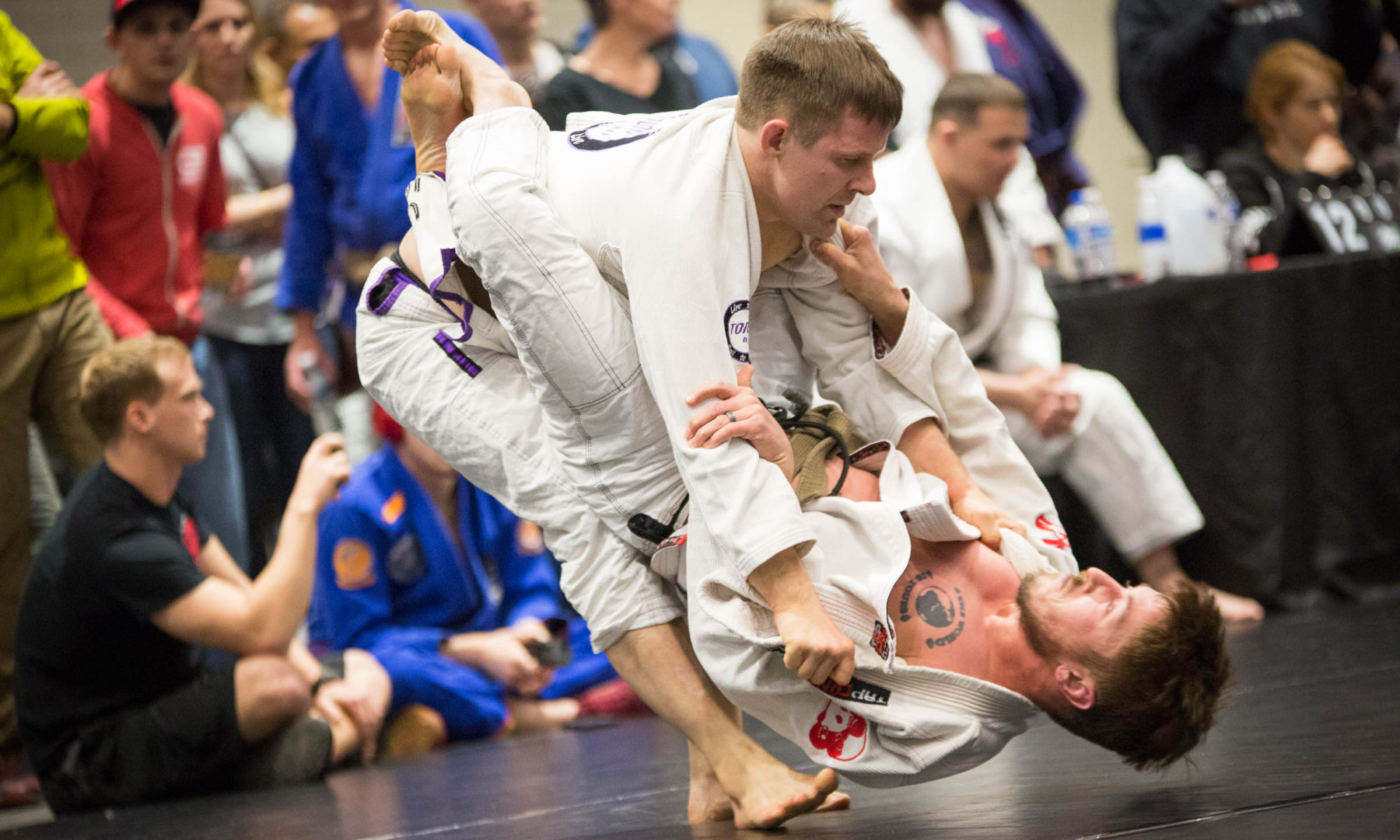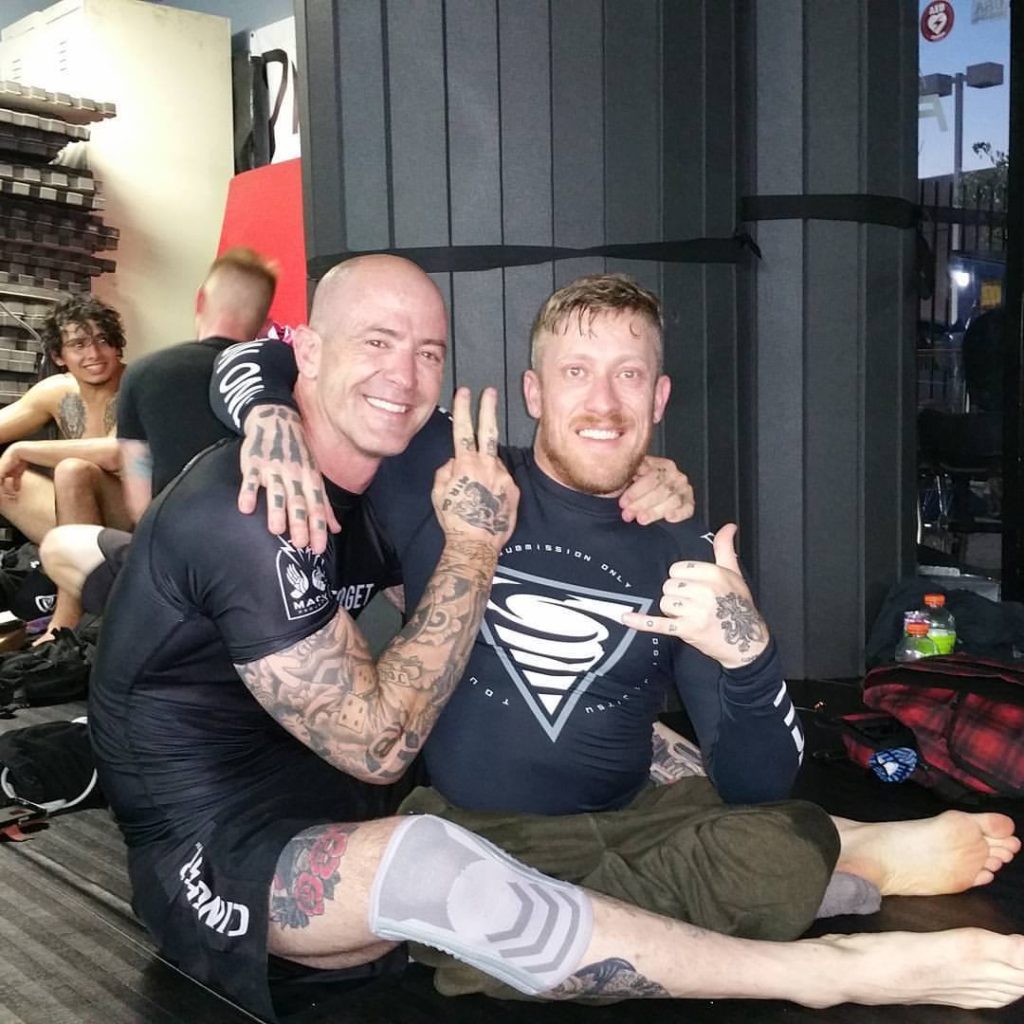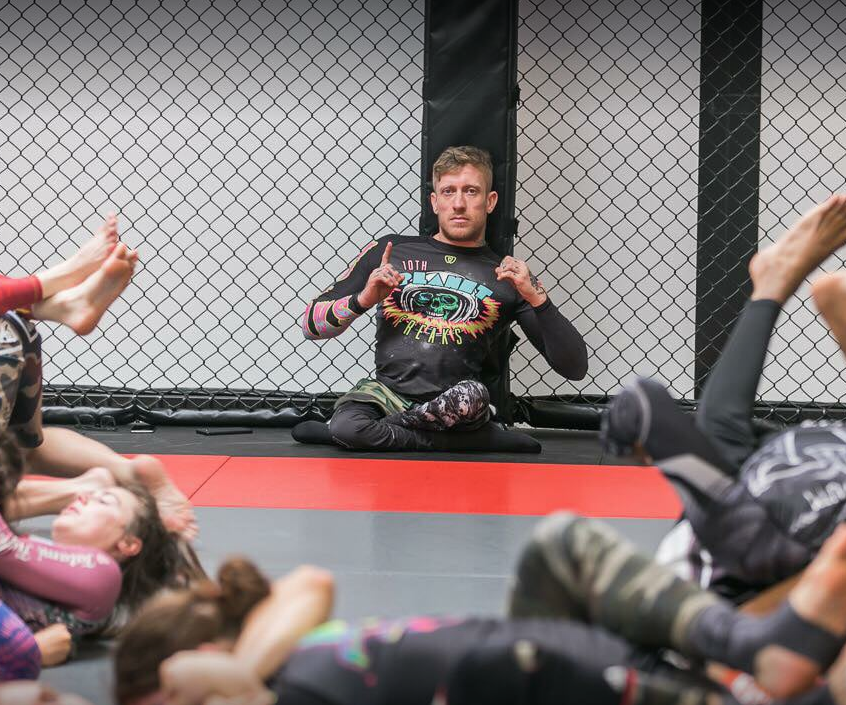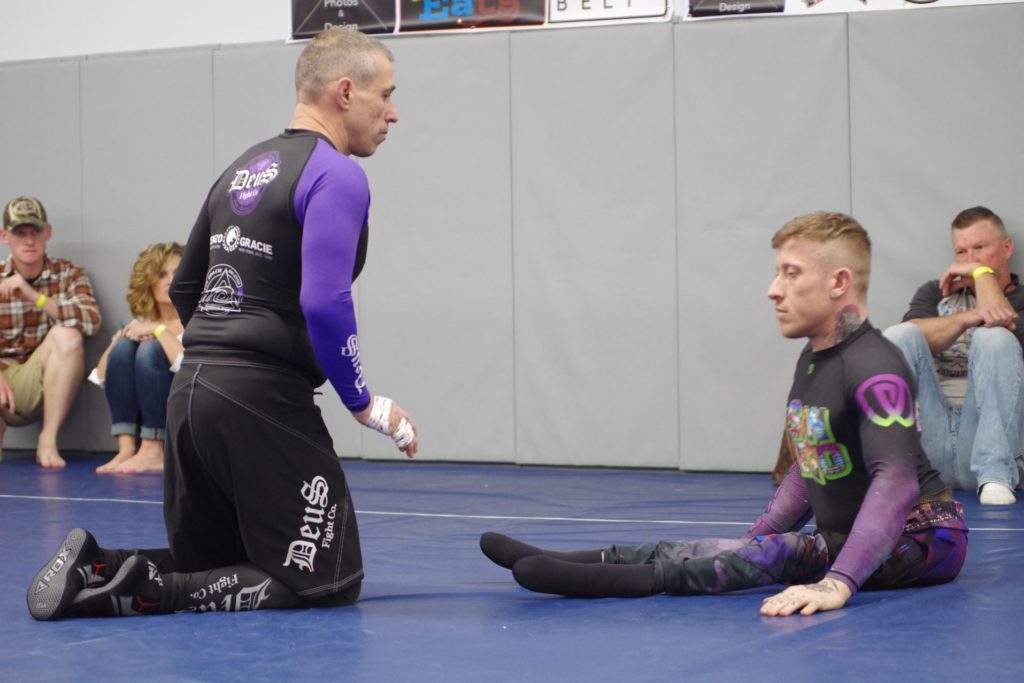By Pete McGregor (@deadweightjj)
All right, you’ve decided to start jiujitsu but you’re mobility restricted in some way (or disabled for those not scarred by the PC social construct we live in today).
Congratulations, you’re a certified psycho. WELCOME TO THE CLUB, FRIEND.
Dirty White Belt has been kind enough to ask me to write a piece on what to expect on your first day in the world of no-gi adaptive grappling. I know what you’re thinking. “Hey, I thought you said we’d be talking about jiujitsu?” Well, jiujitsu just happens to be a martial art that focuses much of the technique on grappling as opposed to striking.
Various schools will incorporate different styles, some will be an amalgamation of all styles, and some will focus on one specific style where you will find some or no striking within the training, drills, and techniques shown and applied. Generally however, jiujitsu largely focuses on the grappling aspect of martial training.
I will note that my disability is a spinal cord injury. I am a complete T-7 paraplegic so all of my jiujitsu is done without the use of my legs. Since I devote much of my training and competing time to an area called no-gi, and my disability is leg limb restricted, I’ll be a bit more focused on what relates to this.
Before we even get to the jiujitsu part, let’s talk accessibility. I’m going to be blunt here: most jiujitsu gyms are usually not thought of with persons with disabilities in mind. They usually don’t get many crazy wheelchair bound or mobility restricted persons entering their club looking for a stiff beating, but hey, you’re awesome (and slightly crazy). Before you go to an academy, phone over there and introduce yourself, ask to speak to the instructor. Explain a little about yourself and your disability and that you’re interested in giving jiujitsu a try. They should give you an immediate vibe of whether or not it’s for you.
The instructor should be warm and inviting and pleased to try and help someone who may give them a challenge. If you get a bad vibe, move on, it’s not worth the time or the money to find out something bad. Also, make sure you ask if the WHOLE facility is accessible. Sometimes the mats are but the changing rooms/showers, parking stalls, and access points aren’t. You should know these things before you show up so there’s no confusion.
Now what is this no-gi business? In traditional styles of jiujitsu, Brazilian and Japanese, training traditionally takes place with a uniform on called a gi or kimono. Traditional forms of jiujitsu allow participants, while engaging in combat, to use their own or their opponents gi (kimono) to manipulate and control their opponents limbs or neck, with the intention of applying force (or chokes) and/or pain so that your opponent concedes defeat, or as is commonly known, “taps out.”
I happen to do a form of jiujitsu that is commonly referred to as no-gi, where the participants do not use a kimono, but rather a limited clothing set, or tight-fitting rashguard material, and are not allowed to use their clothing as a means of manipulation or to apply points of leverage. Rather, it is upon the competitors to control each other by using only their technique, grips and body weight.
So we don’t need a lot of clothing to do no-gi jiujitsu, but we need to know that each gymnasium or academy has their own rules about training attire. Please go out of your way to pay respect to your training facility and learn the required dress for all no-gi classes.
I would also consider buying a pair of protective shorts for new skateboarders or cyclists. I personally bought a pair of large children’s skateboard shorts because they have layers of padding strategically placed so as to protect some of the more bone prominent areas of your body. In the past, I have dealt with some issues from bruising, scraping or cutting the skin I sit on. Something I always have to be conscious of is how the areas of my body I can’t feel are affected by daily wear and tear, let alone that which comes with rigorous training and sparring. Getting some simple protective gear may reduce some of the issues you may encounter.
Okay, so you’re on the mat and already you can’t do a lot of the technique used in warm-up, what now? Well, don’t freak out, no one’s trying to choke you… yet.
I had a very well respected black belt recently ask me “What makes your jiujitsu adaptive?” It took me a second, but I replied “My jiujitsu becomes adaptive when I cannot adequately represent the fundamentals of jiujitsu”. That’s as good an explanation as I’ve ever tried to muster, and if I may say, it is a great place to start from.
So what do we do when we don’t represent the fundamental aspects of jiujitsu? Well, we take what we do know, and we start to build a framework to build from. Hopefully you have created a good relationship with your coach, and much of the things I will speak on, he or she will look to talk to you about as well, but for the sake of this piece, let me just speak to you, the reader, specifically.
First, how do i set up my body for engagement with the sturdiest base? Personally, my problem was (and still is) balance. When I went to engage my opponent with both my hands, I learned quickly I had no points of balance unless I were to immediately get a hold of my opponent or use one hand to engage and one to base. I went from sitting with my legs out in front of me extended straight to sitting criss cross legged.
This simple change of leg positioning allowed me to raise both hands above my shoulder line without falling over. Now I can engage my opponent and not necessarily need to grab them or lean on them to keep my posture. BASE IS KEY. IT IS THE BEGINNING OF YOUR WHOLE GAME.
Next, learn where your weaknesses are first going to make the fight take place. My lack of balance and core strength most often took my fight to bottom side or bottom mount. I got comfortable in those positions (generally considered the worst spots to be in) and made them my home for the first part of my journey.
The problem is, being new and restricted in your skill set, YOU ARE GOING TO GET TAPPED OUT A LOT. That’s okay, it’s going to happen. It will make you better. It SHOULD make you better, and over a period of time, you will come to see where each technique or concept may be applicable to you and your body’s capabilities.
Eventually your home becomes so comfortable, that only you know your way around. People will have to figure you out. And hopefully, you’ll know where all the ways out are before they do.
Well, how will I know which techniques or concepts will work for me if no one like me at my academy does jiujtsu? This is going to get tough at times. Your coaches and mentors can show you all the techniques in the world, introduce you to the most sound concepts and ideas to apply to your game, but ultimately it will be up to you to know.. And it won’t be easy. Trial by fire. Immersion in sparring, live combat drills, and intense training is the only way you’ll ever truly find out. If you really love jiujitsu, if you really love learning, and if you’re in for a long hard road then this should be just your kind of thing.
Okay, let me dispel any myth here that says everyone who has the ability to walk rolls the same. Everyone’s game is like a fingerprint. No one will be alike. This, though is the largely shared commonality, and something I really find awesome about jiujitsu. It’s actually pretty amazing to see that since my game has developed, I can relate to more of my jiujitsu brothers and sisters about techniques we do that are the same, but applied and executed in different ways.
Mobility restriction has actually made me more like some of my peers than I could have ever thought imaginable. What we also have in common is time on the mat testing our understanding and sharpening our tools in order to become just a bit better than the previous training session. Incremental change for the better is what we’re striving for here. You’re gonna have break through moments that will propel your learning curve dramatically for the better, but we want that slow burn.
That’s where we hold on to progress. And there will be days like we seem like we’re not moving forward, but those days are okay. We don’t haul them around like luggage. We take the positives and we try to build off of them.
I can’t stress to you how important it is to have a good coach and mentor. Anyone can give you advice on what to do to make your jiujitsu journey the best it can be, but it really does come down to the coach/professor/sensei of your academy to give you the best guidance. They have to take a concerted effort and interest in your journey, or you will always find hardship throughout.
It is also on you to give your coach as much commitment as you expect in return. Be present and coachable, always with an open mind for learning. Someone behind you giving you knowledge and insight, real time feedback, and a direction for your journey is paramount. Take the time to get to know your coach inside and outside the gym. Make sure they are just as invested in your journey as you are. The only way you’ll go far is if you have the right coach and team behind you.
I hope this helps you on your new path my jiujitsu sister or brother. I can’t tell you how happy I am that there will be one more of us on the mat, showing that jiujitsu is truly for everyone!
Pete McGregor is a jiu-jitsu world traveler who is currently on an adaptive grappling tour of Canada. He’s active on Instagram at @deadweightjj.




One Reply to “Interested in adaptive grappling? Here’s what you need to know.”
Comments are closed.